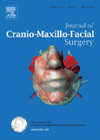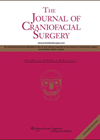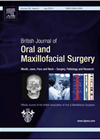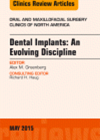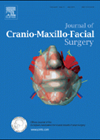
Journal Reviews
Postoperative follow-up of oral squamous cell carcinoma: a new protocol
Oral and oropharyngeal cancers together are the sixth most common malignancy in the world, with an increasing incidence of oral squamous cell carcinoma (OSCC). The recurrence rate of OSCC is reported to be approximately 10-26%. About two-thirds of all recurrent...
Guidelines for the management of craniosynostosis
A Dutch national working group developed this guideline with representatives from the societies representing 11 different specialties and the Dutch national patients’ society. Medical, social and psychological aspects of care for both syndromic and non-syndromic craniosynostosis are included, for both...
An overview of microsurgical reconstruction of the head and neck worldwide
Microsurgical reconstruction is an integral part of the treatment following ablation for malignancy or trauma. Currently there are no clear treatment guidelines following tumour resection. This was recognised a few years ago and in 2008 various collaborative groups were founded...
Facial reconstruction with polyethylene implants
Planning reconstructive surgery for complex craniofacial defects challenges even the most experienced of surgeons. In most cases surgery is undertaken to improve anatomical functioning. However, the anatomical structure of these regions is also critical to facial aesthetics and patient satisfaction...
Two for the price of one multiple parotid neoplasms
With advancing years come many benefits, but one drawback is the acquisition of parotid (or thyroid) neoplasms. Conventional teaching is that most are benign and slowly enlarge, and not infrequently are found bilaterally as in Warthin’s. Pleomorphic adenomas are also...
Post-cancer prosthodontic reconstruction
A functional outcome after head and neck cancer resection is aimed at restoring speech and swallow. Dental reconstruction greatly facilitates this, particularly by enabling the patient to chew food. The authors reinforce the need for careful presurgical planning with treatment...
Early facial fat grafting in Treacher Collins syndrome with malar bone grafts
The authors present their experience in three patients with the effect of early fat grafting at ≥6 months of age with later bone reconstruction of the orbitozygomatic area in patients with Treacher Collins syndrome. Fat grafting was performed two to...
Facial asymmetry and nasal septal deviation
The authors’ aim was to evaluate the relationship between nasal septal deviation and facial asymmetry. They performed a study of 60 patients who had facial 3D CT scans from April 2011 to March 2014 and confirmed facial asymmetry, who were...
A new free flap for the head and neck
Whilst the radial forearm free flap (RFFF) is well known and tested, this group of surgeons from Sunderland, UK, discuss their experience with a comparable flap. They advocate the medial sural artery perforator flap (MSAPF), with a long pedicle if...
Plunging new depths for the treatment of ranulas
This series of 15 patients describes treatment for ranulas with a suture technique performed as an outpatient under local anaesthesia, in a two-stage process. The authors state that they have modified a historical Chinese technique. During the first visit, the...
Facial nerve injuries in fixing mandibular condylar fractures
The commonest fracture of the mandible is reported in the region of the condyle. Untreated this can lead to shortening of the ramus, facial asymmetry, arthrosis of the temporomandibular joint, impaired mastication and speech. The standard treatment is open reduction...
Intra-oral implants in posterior maxilla - predictors of failure
Generally current dental implant placement is a successful procedure with predictable outcomes, especially when sited within normal quality and quantity of bone. The posterior maxilla, however, can be challenging. This is especially so with reduced bone volume following loss of...

